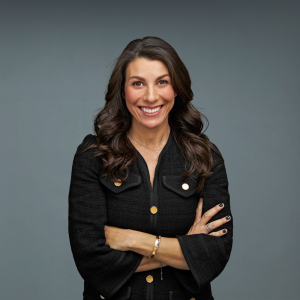
With a new heart, lungs, and kidney, Steve Quinn, 41, looks forward to more happy times with his partner, Sarah, and their 19-month-old daughter, Ciara.
Photo courtesy of Steve Quinn
When Steve Quinn met Bernard S. Kadosh, MD, a transplant cardiologist at NYU Langone Health’s Heart Failure Advanced Care Center, in September 2021, he was so sick that a walk down the block would leave him breathless. “My heart would beat out of rhythm, and I had no energy whatsoever,” says Quinn, 41, an audiobook narrator who lives in Crown Heights, Brooklyn.
Nearly two decades earlier, Quinn had been diagnosed with a rare disorder, called Goodpasture syndrome, that causes the immune system to attack vital organs. At age 26, following three years of dialysis, he received a lifesaving kidney transplant, thanks to a donation from his brother. He improved measurably and moved from Texas to New York City to pursue a career in comedy. There, he met his partner, Sarah Pelkey, who works in the marketing and communications department at NYU Langone. The couple had a daughter, Ciara, now 19 months old. But Quinn’s health declined again soon after her birth.
Dr. Kadosh suspected that Quinn had infiltrative cardiomyopathy, a condition in which harmful substances build up in the heart. A series of tests confirmed the diagnosis: calcium deposits had made the heart’s walls “hard as a stone,” impairing its function and necessitating a transplant. However, the news got worse. His transplanted kidney was failing as well and would need replacing, while his malfunctioning heart had caused the blood vessels in his lungs to deform as well. “Steve’s pulmonary pressure was so high that he wouldn’t be able to survive a heart–kidney transplant,” says Dr. Kadosh, assistant professor of medicine at NYU Grossman School of Medicine. “He needed new lungs, too, for his best chance.”
A successful heart–lung–kidney transplant had never been completed in the Northeast. Yet Quinn was fortunate to wind up in the experienced hands of the surgeons and clinicians at the NYU Langone Transplant Institute. In 2021, the center performed more heart–kidney and heart–lung transplants than any center on the East Coast, with the best one-year survival rate (100 percent). “We have the skill, technical abilities, and collaborative approach to handle complex patients that other centers turn away,” says Nader Moazami, MD, professor of cardiothoracic surgery and chief of the Division of Heart and Lung Transplant and Mechanical Circulatory Support at NYU Grossman School of Medicine.
Quinn was admitted to the hospital on January 19, 2022, and was listed for transplant two weeks later. A donor was identified in another six weeks. On March 15, Dr. Moazami began the 11-hour surgery, accompanied by cardiac surgeon Deane E. Smith, MD, associate director of heart transplantation and mechanical circulatory support, and Stephanie H. Chang, MD, surgical director of lung transplantation. After removing the diseased organs, the surgical team placed the donor lungs and heart. Once they closed the chest incision, the renal team, led by Jonathan C. Berger, MD, assistant professor of surgery at NYU Grossman School of Medicine, completed the kidney transplant.
The recovery, as might be expected, has taken time. Luis F. Angel, MD, medical director of lung transplantation, coached Quinn on how to breathe with his new lungs. Physical and occupational therapists from Rusk Rehabilitation helped him regain strength and mobility while he recovered in the hospital, and speech–language pathologists helped him regain his ability to talk and eat.
Quinn returned home on April 15. By early July, he was walking a mile, with hills, and gaining strength by the week. He delights in playing with his rambunctious toddler and recently took her to the park by himself for the first time. “Now I can look forward to daddy–daughter dances and watching Ciara grow up,” he says. “I’m grateful to the team at NYU Langone that made this possible.”

